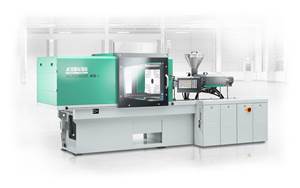Packaging: The Roads of Innovation Meet at Sustainability
In plastics packaging, most of the innovations are oriented towards sustainability, but how do we get there? Processors and industry leaders share their approaches.
Across the supply chain, innovations in packaging are focusing on solutions to improve its environmental footprint. While there are various technologies and methods available, their impact depends on applications and contexts. Some years ago, “sustainable packaging” gained ground in marketing strategies of the entire value chain. But what mega-trends are shaping the sustainable packaging industry?
The concept of sustainable packaging encompasses design and material choice and structure, performance in a selected application, and ultimately what happens after the consumer is done with it. According to Adam Gendell, associate director of the Sustainable Packaging Coalition (SPC), sustainable packages must have minimal life cycle impact and be part of a system that can be indefinitely perpetuated.
Kim Holmes, vice president of sustainability of the Plastics Industry Association (PLASTICS), says that the association is a big proponent of the sustainable material management model, which relies on lifecycle analysis of each material and to looking at all the impact areas through the course of a product lifecycle to determine the environmental benefits. “The benefits are going to vary from packaging to packaging and from application to application. We encourage our members to have a holistic approach, to look at lifecycle impact as a whole.”
David Clark, vice president of Safety, Environment and Sustainability at packaging processor Amcor, notes that many customers are setting goals to improve the environmental attributes of their packaging. In response, Amcor is innovating new technologies, materials, and life cycle strategies that include light-weighting, increasing post-consumer recycled (PCR) content, extending shelf life, and recyclability.
Berry Global also has a multi-faceted strategy that values recyclability, reusability, light-weighting, recycled content, and renewable content. “Our customers have different priorities that may value certain attributes over others. As a solutions provider, we strive to offer a variety of solutions to meet all of our customers' needs,” says Robert Flores, the company’s director of sustainability.
On the material supply side, Dow Chemical Co., for one, is focusing on packaging efficiency as an integral trend that contemplates various pillars: sustainability, converting productivity, recyclability and consumer experience. “If a package for fruit allows to minimize the waste of food, you can say that the package is sustainable for reducing that value chain carbon footprint. If packaging has an improvement in the productivity of its manufacturing process, you can say that it is sustainable because you save in production resources like water or electricity. You can also downgauge and reduce the thickness of package and produce more product with the same amount of material. That is also sustainability,” according to Marcus Vinicius Carvalho, Latin America Marketing Manager for Food & Specialty Packaging.
“Consumers expect industry to address sustainability issues, and we're seeing direct and indirect effects of those expectations. The average consumer understanding of sustainable packaging is limited to issues like recyclability and weight minimization, so we're seeing a number of brands and retailers focus their efforts on recyclability and weight optimization. But the indirect effect is important, too. Brand trust is earned by taking a leadership position on the important issues, even if the average consumer doesn't know what those issues are,” says SPC’s Gendell.
NPE2018 features prominent exhibitors with innovations in materials, recycling and light-weighting at the show floor, as well as at Re|focus Sustainability & Recycling Summit and Re|focus Zone, co-located events with NPE2018.
Related Content
How to Extrusion Blow Mold PHA/PLA Blends
You need to pay attention to the inherent characteristics of biopolymers PHA/PLA materials when setting process parameters to realize better and more consistent outcomes.
Read MoreCalculating an Injection Molding Machine’s Carbon Footprint
Arburg has utilized the ISO TS 1467:2018 standard, which determines the greenhouse gas emissions of a product, to help its customers calculate the product carbon footprint (PCF) of its injection molding machines.
Read MoreHow to Optimize Injection Molding of PHA and PHA/PLA Blends
Here are processing guidelines aimed at both getting the PHA resin into the process without degrading it, and reducing residence time at melt temperatures.
Read MoreScaling Up Sustainable Solutions for Fiber Reinforced Composite Materials
Oak Ridge National Laboratory's Sustainable Manufacturing Technologies Group helps industrial partners tackle the sustainability challenges presented by fiber-reinforced composite materials.
Read MoreRead Next
Beyond Prototypes: 8 Ways the Plastics Industry Is Using 3D Printing
Plastics processors are finding applications for 3D printing around the plant and across the supply chain. Here are 8 examples to look for at NPE 2024.
Read MoreFor PLASTICS' CEO Seaholm, NPE to Shine Light on Sustainability Successes
With advocacy, communication and sustainability as three main pillars, Seaholm leads a trade association to NPE that ‘is more active today than we have ever been.’
Read More
























